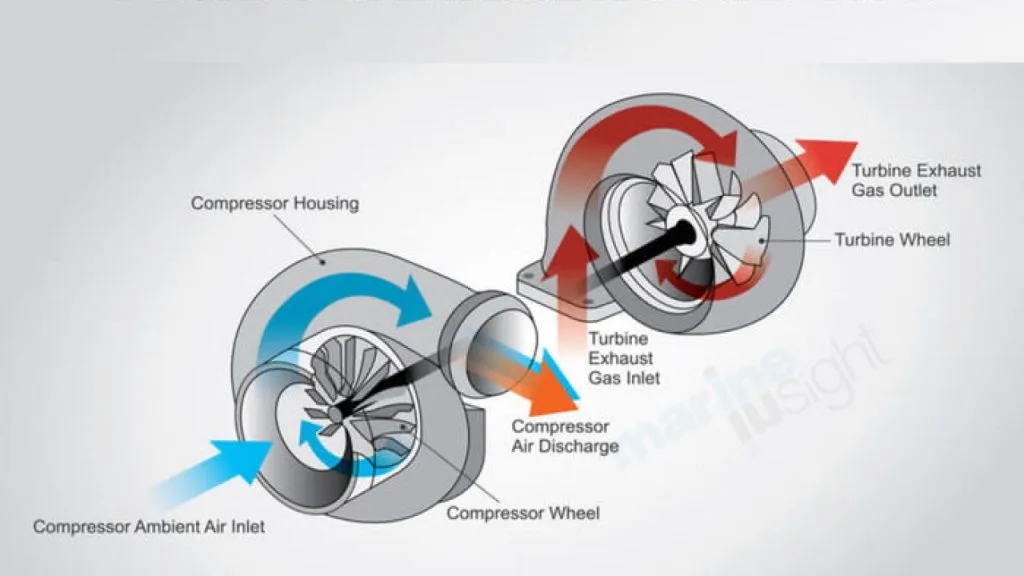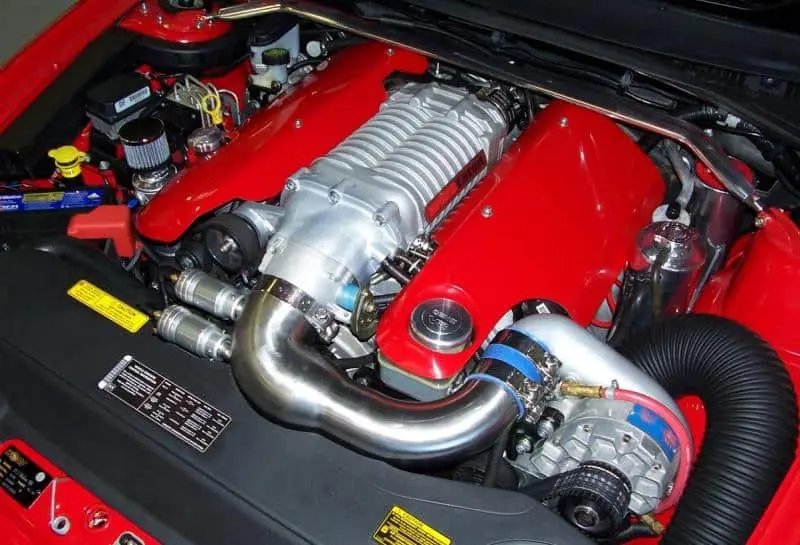They definitely increase your top speed and acceleration, but not until a certain level of speed. Turbochargers are more effective at high speeds than superchargers, more efficient, and less stressful on your engine.

- How much horsepower does a V6 have?
- Discussing the V6 engine power, an average 3-Liter V6 can produce 400 hp which is enough for a mid to full size sedan. However, the average power generation capacity of these engines can be affected by the angle of V.
How much HP does 4 turbo add?
How Much Horsepower Does a Turbo Add to a 4 Cylinder Engine? A turbocharger can also add a significant amount of horsepower to a four-cylinder engine. A typical turbocharger can add anywhere from 70 to 150 hp to a four-cylinder engine, roughly the same amount that it would add to the diesel engine.

- How much horsepower does a Turbo add?
- Quick estimation of the horsepower a turbo adds is often good enough. Take a 500hp naturally aspirated engine and add 14.7psi of boost with a turbo and you can expect to have ~11000hp max. In the real world, it takes a lot of mods and tuning to get there, but at least we have a basic target from 10 seconds on a calculator.
- Do turbochargers increase power?
- Improved power output – Turbochargers add additional power to an engine and allow a smaller engine to match the power output of a larger displacement engine. Increasing the turbo size can add more power and raise the boost threshold, effectively narrowing the power band.
- How much HP can a 500Hp engine make?
- Take a 500hp naturally aspirated engine and add 14.7psi of boost with a turbo and you can expect to have ~11000hp max. In the real world, it takes a lot of mods and tuning to get there, but at least we have a basic target from 10 seconds on a calculator. And in the above example, we don’t even need a calculator. We are just doubling.
- Should I add a turbo to a naturally aspirated engine?
- Don’t expect to see many extra miles per gallon when adding a turbo to a naturally aspirated engine. A naturally aspirated 2.0-liter 4-cylinder engine would probably get better fuel economy than a turbocharged 2.0-liter 4-cylinder engine. But that essentially compares apples to oranges.
Is it cheaper to supercharge or turbocharge?
But in general, they don’t provide a noticeable increase in power unless the engine is running at high speed. Superchargers provide a significant raw power advantage over turbochargers and are easy to install, but they’re expensive and increasingly less common than turbochargers.
- Is a turbo better than a supercharger?
- The turbocharger is, in most cases, cheaper than the supercharger, though it may have a higher installation price tag. The turbocharger is also economical on fuel consumption; as such, it is the more pocket-friendly option. Q: Is Supercharger Safer Than Turbo? A look at the safety aspect, you see that the turbo and supercharger are very safe.
- How much does it cost to install a supercharger?
- Installing a supercharger will cost you around $1000 to $7500, inclusive of labor. The price will depend on the size, manufacturer, and type of car. For a turbocharger, you may part with roughly $500 to $2500, together with labor.
- Are turbochargers leaving supercharger production in the dust?
- Even to the surprise of some industry experts, turbochargers are increasing at a dramatically fast rate and are leaving supercharger production in the dust.
- What happens if you overboost a supercharger?
- A smaller pulley means the supercharger will spin faster so it will make more boost. The supercharger is limited by it’s efficiency, so if you overboost the supercharger, it will blow hot air into your engine and you will not make as much power (amongst a myriad of other problems).
What is the highest rpm turbo?
While your car’s engine revs, at cruise, at around 2,000 rpm, a turbo’s turbine can reach rotational speeds of more than 280,000 rpm.
- What is the RPM of a turbocharger?
- The rpm of a turbocharger is between 60,000 and 300,000. It is measured by the exhaust temperature from the outlet. BE in Mechanical, Anand Institute of Higher Technology, Chennai (Graduated 2018) Author has 74 answers and 187.3K answer views 4 y For average 1.2L engine…. While accelerating about 60 to 70kmph….turbo spins more than one lakh rpm..
- What was the first turboprop engine?
- The first mention of turboprop engines in the general public press was in the February 1944 issue of the British aviation publication Flight, which included a detailed cutaway drawing of what a possible future turboprop engine could look like. The drawing was very close to what the future Rolls-Royce Trent would look like.
- How fast can a turbo spin?
- Turbos on passenger cars can spin up to around 250k RPMs, and bearing tollerances are around a couple ten thousenths of an inch, so they are very sensitive to issues. The failure mode for a hot shutdown is very specific.
- What is the RPM of a Formula 1 engine?
- A compromise was reached, allowing V6 forced induction engines instead. The engines rarely exceed 12,000 rpm during qualifying and race, due to the new fuel flow restrictions.
Are cars with turbo faster?
The most obvious advantage of getting a turbocharged engine in your vehicle is that you’re going to have a much faster, much more powerful ride – but you don’t need an auto mechanic to tell you that.

- What are the benefits of a turbocharged engine?
- Cars with a lighter 4-cylinder turbo engine have a better weight distribution compared to the same cars with a heavy V6 or V8. Better weight distribution means more balanced handling. 6. Due to forced induction, turbocharged engines are better at higher altitudes when driving in the mountains. 1.
- What are the best turbo cars?
- Another couple of classics to round off the list. And the Nissan 300ZX is probably one of the best turbo cars you can get. One of the cleanest cars ever made, 153 mph and you can pick a good one up for around $10,000 or even at $9,000 according to Hemmings. A bargain really!
- Can you get a turbocharged car for cheap?
- And this list should convince you that you can get many amazing turbocharged cars for cheap. Below, we have included some of the cheapest modern machines that you can buy with a factory turbocharger built-in, along with some classic turbocharged cars that are now going for great prices, too.
- Why are turbocharged engines better at higher altitudes?
- Due to forced induction, turbocharged engines are better at higher altitudes when driving in the mountains. 1. The turbocharger adds complexity to the engine, which means higher risk for potential problems as the car ages. 2.
Is turbo engine more powerful?
Turbos produce more power in the same sized engine. That’s because every stroke of the piston generates more power than in naturally-aspirated engines. This means that more cars are now fitted with smaller, turbocharged engines, replacing larger and less economical units.
How many turbos can a car have?
Automobile manufacturers rarely use more than two turbochargers.
- Do all cars have turbo?
- No not all cars have turbo. A turbo charger is a small round device normally mounted in the exhaust stream near the engine. The expelled exhaust gases spin a turbine that powers a fan to force air into the engine. In a naturally aspirated engine the air would have to be pulled in to the cylinder during the intake stroke.
- Are turbochargers bad for your engine?
- As above, a car that is built to include the use of a turbocharger will be the best option if you’re looking for boost. However, if you do wish to install a turbo in your car without upgrading the other aspects of the vehicle, then you will put more strain on the engine and potentially break it.
- How much horsepower does a turbo boost?
- A turbo can boost an engine’s horsepower by 30 to 40 percent or approximately 70 to 150 HP. Is a turbocharger bad for your engine? A turbocharger adds the danger of knocking, as when you compress air, the temperature increases, which can damage the engine if you don’t reduce the compression ratio.
- Why do we use a turbo on a smaller engine?
- Vehicle manufacturers use a turbo on a smaller engine to improve the fuel economy of a car without losing power. A smaller engine is going to be more fuel efficient than a larger engine. The added turbo allows the smaller engine to produce the same amount of power as a larger engine.
Does bigger turbo mean more horsepower?
The greater the turbo boost pressure, the greater the engine power. Besides, boosting an engine using a turbocharger does not only help to increase the engine’s horsepower but also its torque.

- How does a turbo boost affect power?
- The greater the turbo boost pressure, the greater the engine power. Besides, boosting an engine using a turbocharger does not only help to increase the engine’s horsepower but also its torque. What Causes a Change in Power? Imagine if you have two turbocharged cars featuring the same type of engine with the same displacement.
- How does a turbocharger work?
- A turbocharger is a turbine-driven forced induction machine that boosts the efficiency and power output of an internal combustion engine by bringing additional air into the combustion chamber. If it seems a bit complicated to understand how a turbo works, take the cue from the fact that an engine run by a mixture of fuel and air.
- How do I choose a performance turbocharger?
- Choosing a performance turbocharger starts with a horsepower target. Each turbocharger is designed to support a specific range of horsepower and engine displacement. If a turbo is too large for your engine, you will have a lot of turbo lag, and if a turbo is too small for your engine you may not reach your horsepower target.
- What happens if a turbo is too big?
- If a turbo is too large for your engine, you will have a lot of turbo lag, and if a turbo is too small for your engine you may not reach your horsepower target. The resources our engineers have created in these pages will help guide you through the process.
At what rpm does turbo work?
between 80,000 and 200,000 rotations per minute
The turbine in the turbocharger usually spins at speeds between 80,000 and 200,000 rotations per minute (rpm) — that’s up to 30 times faster than most car engines can go.
- How fast does a turbocharger run?
- The turbine in the turbocharger usually spins at speeds between 80,000 and 200,000 rotations per minute (rpm) — that’s up to 30 times faster than most car engines can go. And since it is hooked up to the exhaust, the turbine also runs at very high temperatures.
- How does a turbo work?
- A turbo provides extra power because it uses the exhaust gases to pump air into the engine block under pressure. This technique is very effective and beside more power a turbo can decrease the fuel consumption. A turbo uses the exhaust gases to set a flywheel in motion, the more revs, the more exhaust gases the faster the flywheel turns.
- Does a turbo spin at idle RPM?
- Basically a turbo will spin at idle rpm. But as the turbo requires high rpm and needs High horsepower to compress air they are basically doing nothing. The point at which a turbo starts creating positive pressure is not a set thing.






